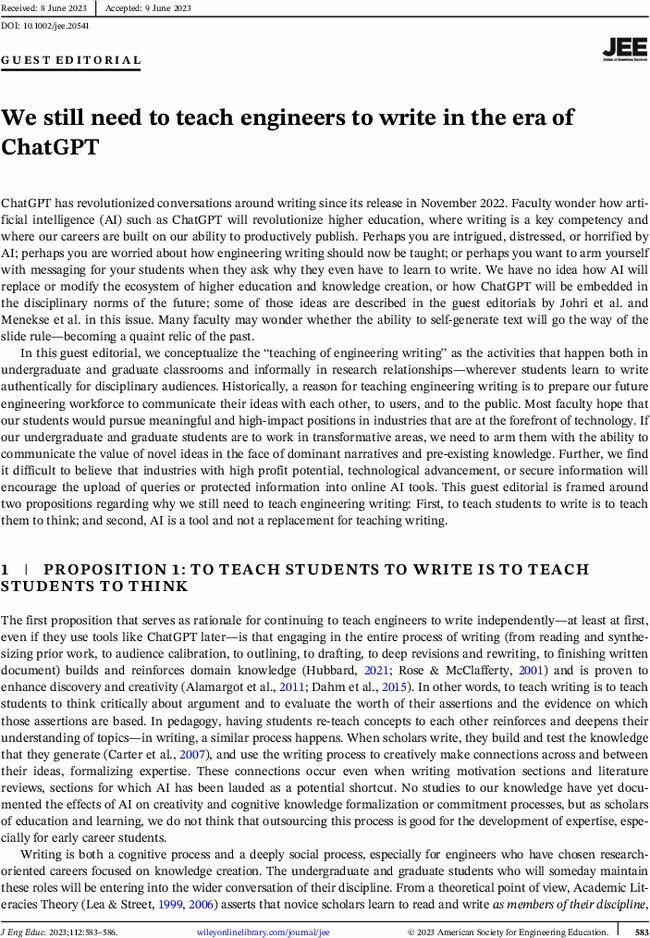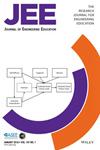We still need to teach engineers to write in the era of ChatGPT
IF 3.9
2区 工程技术
Q1 EDUCATION & EDUCATIONAL RESEARCH
引用次数: 0
Abstract
ChatGPT has revolutionized conversations around writing since its release in November 2022. Faculty wonder how artificial intelligence (AI) such as ChatGPT will revolutionize higher education, where writing is a key competency and where our careers are built on our ability to productively publish. Perhaps you are intrigued, distressed, or horrified by AI; perhaps you are worried about how engineering writing should now be taught; or perhaps you want to arm yourself with messaging for your students when they ask why they even have to learn to write. We have no idea how AI will replace or modify the ecosystem of higher education and knowledge creation, or how ChatGPT will be embedded in the disciplinary norms of the future; some of those ideas are described in the guest editorials by Johri et al. and Menekse et al. in this issue. Many faculty may wonder whether the ability to self-generate text will go the way of the slide rule—becoming a quaint relic of the past. In this guest editorial, we conceptualize the “teaching of engineering writing” as the activities that happen both in undergraduate and graduate classrooms and informally in research relationships—wherever students learn to write authentically for disciplinary audiences. Historically, a reason for teaching engineering writing is to prepare our future engineering workforce to communicate their ideas with each other, to users, and to the public. Most faculty hope that our students would pursue meaningful and high-impact positions in industries that are at the forefront of technology. If our undergraduate and graduate students are to work in transformative areas, we need to arm them with the ability to communicate the value of novel ideas in the face of dominant narratives and pre-existing knowledge. Further, we find it difficult to believe that industries with high profit potential, technological advancement, or secure information will encourage the upload of queries or protected information into online AI tools. This guest editorial is framed around two propositions regarding why we still need to teach engineering writing: First, to teach students to write is to teach them to think; and second, AI is a tool and not a replacement for teaching writing.

在ChatGPT时代,我们仍然需要教工程师写作
本文章由计算机程序翻译,如有差异,请以英文原文为准。
求助全文
约1分钟内获得全文
求助全文
来源期刊

Journal of Engineering Education
工程技术-工程:综合
CiteScore
12.20
自引率
11.80%
发文量
47
审稿时长
>12 weeks
期刊介绍:
The Journal of Engineering Education (JEE) serves to cultivate, disseminate, and archive scholarly research in engineering education.
 求助内容:
求助内容: 应助结果提醒方式:
应助结果提醒方式:


